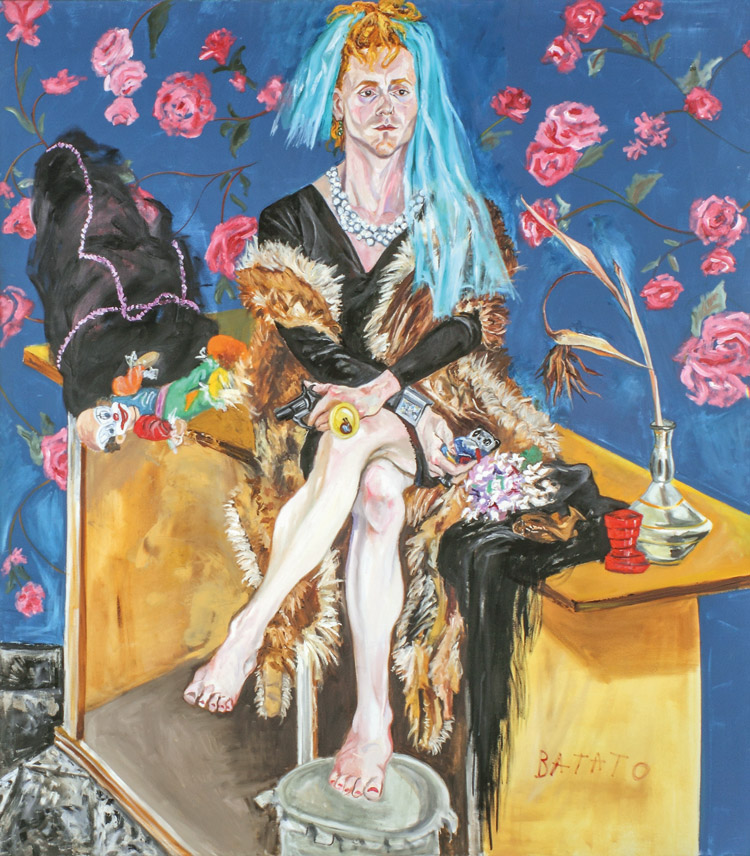Two museums in the city of Buenos Aires exhibit exhibitions that deserve to be seen leaving the comfort of home. Gyula Kosice. Intergaláctico; Mondongo. Manifestación, and Tercer ojo. Colección Costantini, all three at the Malba -Museo de Arte Latinoamericano de Buenos Aires, and Moderno y Metamoderno at the Museo de Arte Moderno de Buenos Aires.
Moderno y Metamoderno is an ambitious exhibition that unfolds in four large rooms at the Moderno, highlights the important collections that make up the museum's heritage and allows us to visualize its growth and research processes, materialized in exhibitions, publications and actions throughout its 68 years of existence. Through a selection of 300 works created over the last 100 years, the exhibition offers a tour of the movements of modern and contemporary Argentine art. As we walk through these rooms, we appreciate the history of this public collection. The works on display are a selection of the acquisitions made by the Museum's first directors, Rafael Squirru and Hugo Parpagnoli, of the donations that made up the Ignacio Pirovano Collection and the legacy of Alberto Heredia, and of the 622 works incorporated in the last ten years. Engravings, paintings, sculptures, drawings, videos, installations and textile art make up the exhibition, which can be visited at the Museum of Modern Art, Avenida San Juan 350, in the San Telmo neighborhood, on Mondays, Wednesdays, Thursdays and Fridays: 11:00 a.m. to 7:00 p.m. and Saturdays, Sundays and holidays: 11:00 a.m. to 8:00 p.m.
Two sculptures, Statue No. 5, 1967, by Roberto Aizenberg on the left, Lady, 2007, by Juan Stoppani, in Modern and Metamodern. Photograph: Courtesy of MAMBA.
Meanwhile, three interesting exhibitions are taking place at the Malba in the Palermo neighborhood. Gyula Kosice. Intergaláctico displays an immense collection by the visionary Argentine artist Gyula Kosice (born Ferdinand Fallik; Kosice, Czechoslovakia, 1924 - Buenos Aires, 2016), an avant-garde and futurist sculptor who introduced the element of water into his works. The exhibition, held in collaboration with the Museum of Fine Arts in Houston, United States, displays in one of its rooms ―because the exhibition is really huge and occupies three spaces― The Hydrospatial City (1946-2004), an experimental work-process that traverses the searches of the artist Gyula Kosice throughout six decades of production. “Man must not end up on Earth,” Kosice stated in the only published issue of the magazine Arturo in 1944, a fundamental organ of Arte Concreto Invención. Two years later, in 1946, he began to conceive this work. Kosice first sketched the work in manifestos, poems, drawings and brass models (now missing), before it was realized in the present version, housed by the Museum of Fine Arts in Houston since 2009. The city challenges the notions of borders and private property and encourages the movement of individuals in a clear environmental space across the globe. The author replaces the conventional division of the home (kitchen, bedrooms, bathroom, etc.) with new forms of modular habitats. Thus, hydrospatial nomadic life alters the values of the capitalist system, opening the way to a new form of coexistence; the places he proposes for living encourage a playful and emotional humanity that reinvents the experience of living in community.
One of the houses in the Hydrospatial City. Photography: Hilario.
In the same museum, the Argentine art collective Mondongo exhibits Mondongo. Manifestación, a controversial intervention, since it raises a shantytown on the museum floor itself, with its metal and wood corridors. The precariousness of the space that houses the collection of a millionaire, located in one of the richest neighborhoods in Argentina, and two blocks from a real shantytown, the Asentamiento Saldías. Moral judgments aside, the work is of overwhelming beauty, and thought with such ingenuity, that a promenade through the shantytown concludes in a dramatic dialogue between Manifestación, the iconic painting by Antonio Berni from 1934, and a mirror work, inspired by the former and made in plasticine by Mondongo.
Recreation of Sin pan y sin trabajo, an oil painting by Ernesto de la Cárcova from 1894, within Mondongo's installation, dialogues with Manifestación by Antonio Berni. Photograph by the author.
The Malba is also exhibiting Tercer ojo, a coming and going between the Malba collection and that of its founder Eduardo F. Costantini. The occasion allows us to enjoy the masterpieces of the museum, which include the signatures of Frida Kahlo, Diego Rivera, Tarsila do Amaral, Xul Solar, Joaquín Torres García, Emilio Pettoruti, Wifredo Lam, Roberto Matta, Maria Martins, Remedios Varo, Antonio Berni and Jorge de la Vega, with those of its private collection, such as, for example, the magnificent portrait of Batato Barea by Marcia Schvartz. The three exhibitions can be visited at the Malba, Av. Figueroa Alcorta 3415, Thursday to Monday from 12:00 to 20:00 and Wednesday from 11:00 to 20:00 (closed on Tuesdays).

